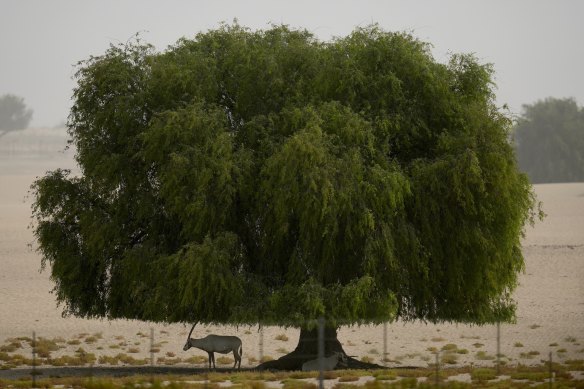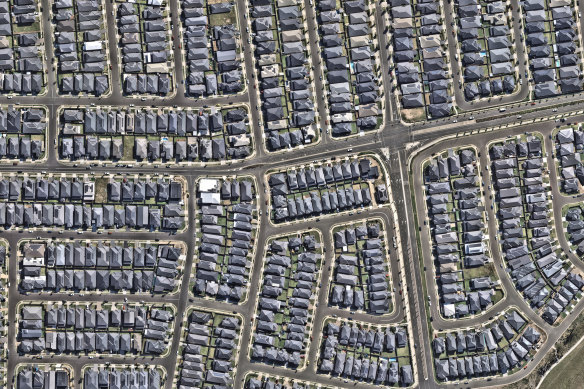Editorial
Rules to retain and enhance our once ‘leafy suburbs’ are welcome
With the last day of the month tomorrow, it has been widely reported this July is the hottest month ever recorded on Earth. UN chief Antonio Guterres said the planet is entering an “era of global boiling”.
Images of tourists fleeing the Greek island of Rhodes is reminder enough we are perilously close to the point of no return on global climate change. Although scientists are agreed the extra heat is mainly linked to the use of fossil fuels, it would seem negligent to dismiss any measures to mitigate temperature increase.
The Sydney Morning Herald last week reported academics say Sydney is failing to factor rising temperatures and climate change into its development policies. They warn a lack of trees and green space will not only fail to protect against heat but lead to poorer social and health outcomes.

An Arabian Oryx takes refuge in the shade of a tree during a dusty hot day in Dubai this month. Credit: AP
The places with the least canopy cover – which include Fairfield, Merrylands and newer parts of the Hills – are up to 10 degrees hotter than heavily vegetated areas, figures from the NSW Department of Planning show.
It is timely then that, as Andrew Taylor reports today, Woollahra Municipal Council has passed new planning rules that require properties to have a tree canopy of up to 35 per cent and set landscaping controls to prevent the overdevelopment of sites.
Woollahra Liberal councillor Mary-Lou Jarvis says the new planning rules are a first for NSW and prompted by a spate of knockdown-rebuilds in Sydney’s eastern suburbs that had resulted in the destruction of mature trees.
The scenario where an established property with its mature, treed gardens is bulldozed and replaced by one vast property or a compact row of townhouses almost encroaching the boundaries is all too familiar. The basic physics that roofs, concrete and asphalt radiate heat is well known.

Spot the tree: Marsden Park, 2023.
Is it not then reasonable, other factors apart, to argue that if “poorer social and health outcomes” eventuate in the years ahead, that market forces will play out and that the suburbs with the greater tree canopy, and hence cooler, will become the preferred choice? Even more so than they are today.
The US Environmental Protection Agency reported last year that trees and vegetation lower surface and air temperatures by providing shade through what is known as evapotranspiration - defined as the combined processes by which water moves from the earth’s surface into the atmosphere.
Their researchers found evapotranspiration, alone or in combination with shading, can help reduce peak summer temperatures by 1 to 5°C. It seems logical that that would mean the days when air conditioning is needed could as a result be reduced, saving on electricity which may have been generated using fossil fuels. It sounds like a win-win situation.
Urban Taskforce chief executive Tom Forrest says the new rules will prevent increased housing density in Sydney’s eastern suburbs. He suggests the council should buy land for parks and green public open space but responsibility for the greening of our suburbs is not something that should be left to councils to orchestrate and finance.
But as Woollahra argues, development on private property needs to, or be obliged to, play its part.
While we are not dismissing the real and pressing problem of housing supply, we also support initiatives to ensure our city remains liveable. Ambient temperature increases don’t recognise council boundaries and we believe Woollahra Council is providing a progressive example.
The sooner we fully appreciate that trees are a necessity and a benefit and not just an inconvenient impediment to the construction of property or roads, the better, and cooler, we will be.